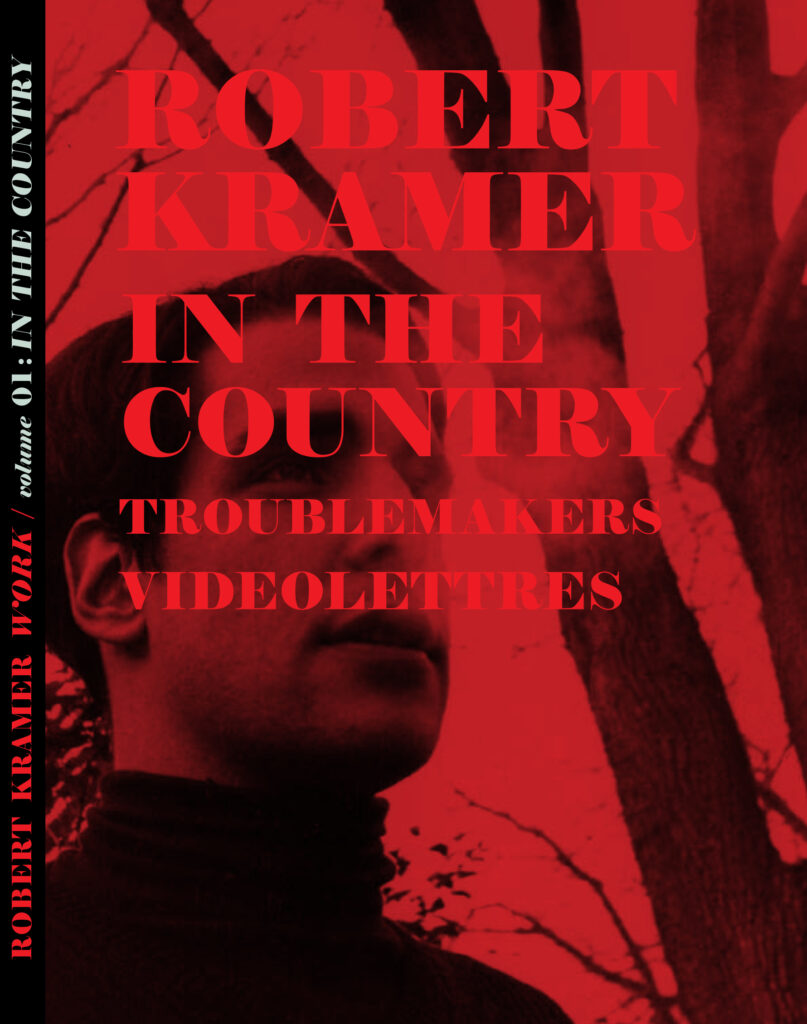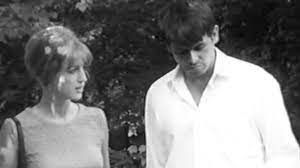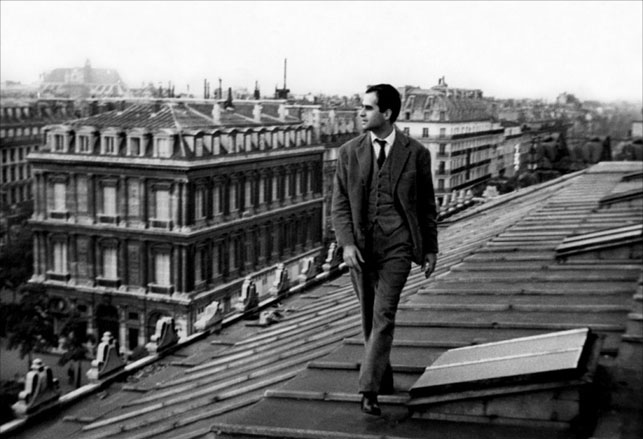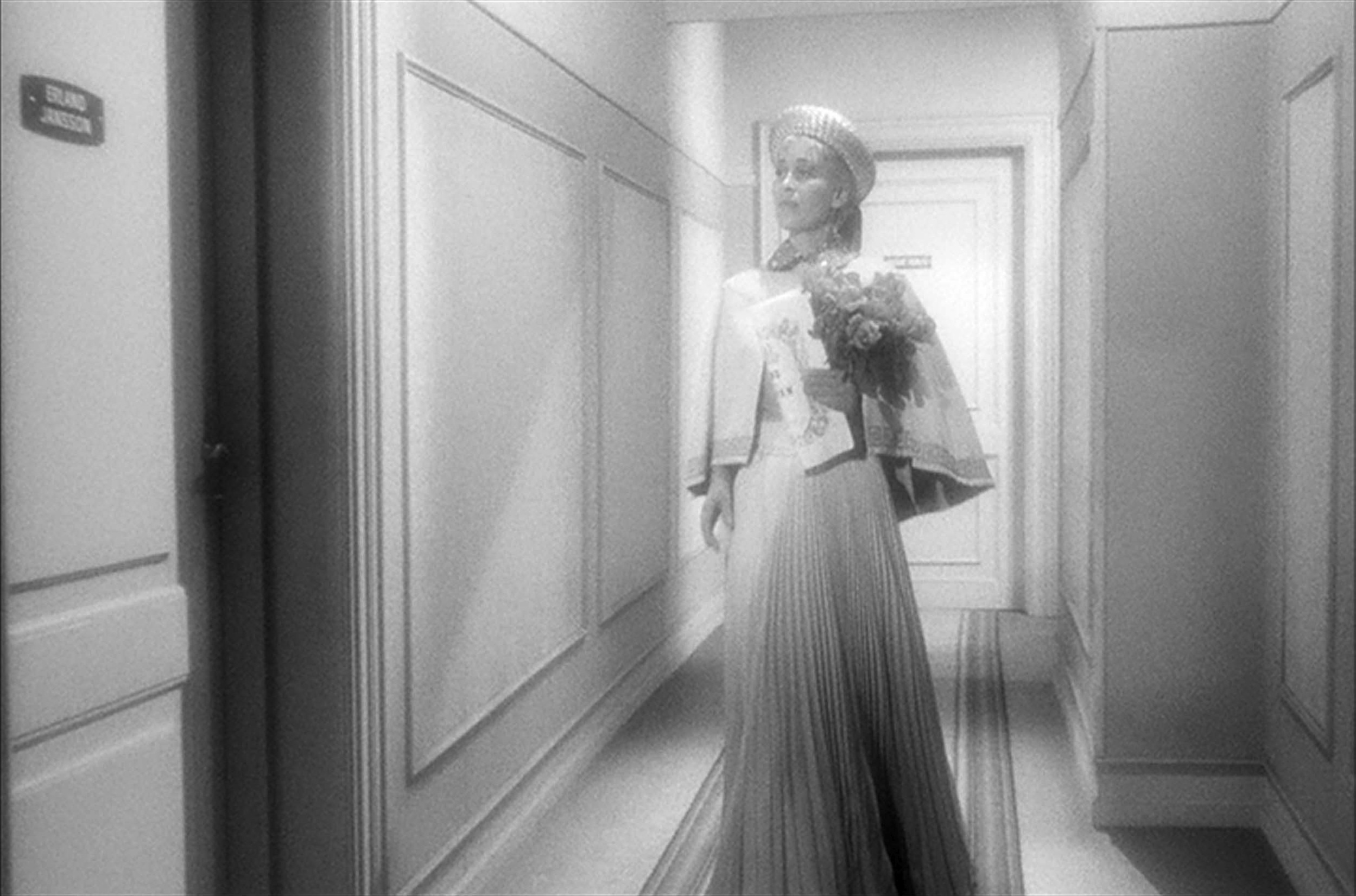`Commissioned by Re:Voir in France in 2021 for a currently available DVD. — J.R.

Seen as a troubled diptych, Troublemakers (filmed in Newark during the fall of 1965, two years before the riots) and In the Country (1966) offer, respectively, public and private glimpses of the political frustrations faced by young white radicals in the United States during this volatile period. Robert Kramer–producer, writer, and director of the second film–receives no credit on the first, but he’s one of the more vocal radicals appearing in it, expressing some of the same disillusionment with mainstream, workaday politics that the second film is also wrestling with. The son of a Park Avenue heart specialist and a textile designer, Robert attended private schools, Swarthmore College, and Stanford, carrying around his privilege like an albatross, as a guilt-ridden handicap to overcome.
The implicit hope that led members of the SDS (Students for a Democratic Society) — including the very young Tom Hayden, Kramer, and filmmakers Norman Fruchter (sound) and Robert Machover (camera and editing) — to join and/or recruit the efforts of black activists in their Newark ghetto and the explicit bitterness of a nameless, fictional white radical couple (William Devane and Catherine Merrill) retreating to and brooding within their privileged rural isolation need to be viewed as reverse sides of the same countercultural coin. Significantly, Machover and Fruchter worked in the same capacities on both films, and a black musician who participated in one of the early discussions in Troublemakers is seen and mentioned early on by Devane, who guiltily notes that this man can’t escape his fate and condition but he can, before the camera pans across still frames of many of the other Newark residents in Troublemakers. Even the obsessive and compulsive reliance on pans in this film expresses the same restless dissatisfaction, like an insomniac fruitlessly searching for a comfortable resting place and position.
Having seen both these films as well as Kramer’s first feature, The Edge (1967] — a sequel to and extension of In the Country in many respects — when they first appeared, when I was a civil rights and antiwar activist myself, I can testify to the degree to which they spoke directly to my heart and mind, even if they left me with far more questions than answers. Invaluable and often embarrassing time capsules (especially when they remind aging radicals of their former excesses), these films were made at a time when it was still considered unproblematic to use the word “Negro” (rather than the less accurate and more metaphysical “Black” and “Afro-American” that are still favored today), and to perceive macho positioning, including cigarette consumption, weapon assembly, and highly gendered speech roles, as acceptable, dramatic forms of universal authenticity.
A decade after this relatively obscure screen debut, Devane would play a debonair yet also quietly murderous and psychotic jewel thief In Alfred Hitchcock’s final feature, Family Plot. This seems emblematic of certain dark changes that American culture underwent during the same period, above all in the ways that it preferred to view itself. By the time The Silence of the Lambs won its five top Oscars in 1991, the debonair-yet- psychotic-serial-killer as a type had improbably become an “ironically” cherished holy figure in pop culture, even a perverse sort of role model.
On another level, Troublemakers impressed me in the 60s and still does today for both its economy and its straightforward street smarts. — especially its uncanny anticipation of what would make the 1967 Newark riots seem inevitable. While it took half a century for political filmmaking to reveal the major differences between the radical aims of the black students and the white students at Columbia University who took over and occupied separate campus buildings in 1968, creating a political impasse which Paul Cronin’s lengthy 2018 A Time to Stir spells out in copious detail, Troublemakers was already exposing, three years earlier, the futility of the joint reformist activism of radical white students and black Newark residents to attain either rent control or a much-needed traffic light, blocked by the continuous obstructions of bureaucracy, inertia, and corruption that ultimately came to seem almost interchangeable. The film also suggests, at least indirectly, why the civil rights movement in the North failed as decisively as the movement in the South succeeded — because the latter could use Black churches to help organize its demonstrations, to which white radicals lacked the same sort of access that Martin Luther King and others had.
By contrast, much of the truth of In the Country — and, even more, that of Kramer’s subsequent The Edge, and his Ice in 1970–was that of an anguished autocritique. Rawly exposed, the neurotic self-interrogation and even self-flagellation of the privileged left, trapped in its own reflexes, had a mournful song of its own to sing. Although some writers have aptly compared the troubled doubts and ambiguities of these films with those of Michelangelo Antonioni and the Jean-Luc Godard of Alphaville, for me they have much more in common with Jacques Rivette’s first feature, Paris Belongs To Us, and its haunting, lyrical shifts between abject paranoia and cozy camaraderie. In a 1997 book-length interview with his friend Bernard Eisenschitz, Kramer recalled that he saw the film “after In the Country and before Ice,” adding that it had a great deal of “importance” (by which he apparently meant influence) on Ice, along with Alphaville (whose use of contemporary locations to signify “the future” is even more obvious, as it is in George Lucas’s THX 1138, released a year after Ice).
But the kinship between Rivette’s first feature and Kramer’s is far more striking, even when it comes to In the Country. If Troublemakers lucidly told us what political struggle meant, Kramer’s rambling, moody fiction, at once troubled and troubling, told us what it felt like. Above all, it felt like endless waiting — a condition that characterizes Troublemakers at least as much as In the Country, The Edge, and Ice. It also made Kramer ideally suited as the principal writer on Wim Wenders’ underrated (and quite Rivettean) The State of Things (1982), where a small film crew shooting a black-and-white apocalyptic science fiction film in the wilds of Portugal suddenly finds itself out of film and out of money and therefore forced to wait.
Occupying an existential stalemate consisting of both alienation and a sense of entitlement, Rivette’s characters can be summed up in the dialectic formed by the film’s title and its opening epigraph, “Paris belongs to no one.” The characteristic opening line of the offscreen narration in In the Country, ushering in a long succession of disconnected pans: “He looked at how little he’d been able to do so far.” Even the alternating offscreen voices of Devane and Merrill sometimes come across less like dialogue and more like competing laments as we see them walk together around their refuge, a country house that they’re trying to sell. Her complaints about his complaints, his negativity and self-hatred, register at times like an echo chamber, expressing only another form of stasis and paralysis.
Furthermore, because the other side of the Atlantic makes the despair of being stranded without a narrative seem far more glamorous than the same condition on one’s home turf, French cinephiles such as Eisenschitz and Serge Daney would subsequently be politically inspired by John Douglas and Kramer’s 1975 Milestones in much the same way that Kramer and I were stirred by the epic reveries of Paris Belongs to Us with its own bohemian disaffection crossed with melancholy tenderness. And French viewers would tend to neglect Rivette’s acute grasp of the zeitgeist in Paris nous appartient, L’amour fou, and Out 1 almost as much as Americans would neglect Kramer’s sense of its stateside equivalents — a neglect that may well have hastened his move to Europe in the mid-1970s. In the case of Paris, it was a lesson that exemplified dogged struggle (and indeed, endless waiting) and a stubborn devotion towards its own haphazard stop-and-start production, which eventually stretched out over years, making Rivette’s feature virtually qualify as both the first to be started and the last to be completed by a Cahiers du Cinéma film critic.
It’s also worth emphasizing that, in striking contrast to Rivette, Eisenschitz, and Daney, Kramer wasn’t any sort of cinephile, even though he was seeing some of the same films around the same time. Surprisingly, he told Eisenschitz that the “real” influence on In The Country had been Carl Dreyer’s Gertrud, which Kramer saw at a repertory art cinema, the Thalia, with his mother — possibly for its perpetually dissatisfied and demanding heroine and its plaintive classical music, not to mention its domestic quarrels between a couple about how they should live together. In striking contrast to Kramer’s far more measured and mature uses of William Faulkner and Dmitri Shostakovich, among others, in the “videoletters” he sent to Steve Dwoskin in early 1991, his kinship with Dreyer feels mostly like an identification with the desperation and wound-licking of his title heroine rather than an appreciation or adoption of any of his artistic strategies.








